Maine’s lighthouses, which once served as saviors along the seacoast, are in no way a forgotten feature. All but three are still standing, and only nine are no longer functioning. Of the ones that are still operating, most are maintained as heritage sites, and others are owned and maintained privately. Some are only accessible by water. Lighthouses are one of Maine’s most striking, iconic features symbolizing the state’s maritime heritage.

Particularly for avid photographers like me, Maine’s legendary lighthouses are a popular destination point because they are located in strategic, beautiful spots, usually above rocky cliffs. From Portland Head Lighthouse in Cape Elizabeth (the oldest of Maine's lighthouses; it dates to 1791), to West Quoddy Head (the easternmost lighthouse in the United States), these towers shine their flashing beacons as navigational aids to boats; they are like a traffic sign for those at sea. Although with today’s technology, ships don’t depend on lighthouses to navigate around the coast, lighthouses have developed a new significance throughout the years as a symbol of the New England coast.
No two lighthouses are the same. They were painted different colors so those at sea could distinguish them and know their location. They also had individual flashing patterns of lights. One sent out a flash every five seconds, whereas another might have a fifteen-second period of darkness followed by a three-second period of brightness. Mariners could look up in a guidebook which lighthouse had which patterns, so the captains of boats could determine their position at sea in relation to the land.
If one visits a lighthouse on a sunny day, you can forget about what happens in fog when the light isn't visible. For these situations sound is used - a foghorn which often has a low, mournful pitch. Like the lights, each lighthouse emitted a specific number of blasts every minute so it could be told apart from all others.
Lighthouse keepers were a dedicated group. These individuals, before the days of electricity, had to light the lamp at sunset and watch and check to make sure the lamp stayed on. Whale oil with wicks was once used for the light. The lens and windows had to be kept clean, so the light could be seen. The lighthouse keeper kept a daily log to record the weather and other related information. There are stories of lighthouse keepers who survived big storms and rescued people. Abbie Burgess is one of the most famous heroines, for she maintained a light during a raging winter storm in 1856 while her father was away. Later in life, she married another lighthouse keeper. She worked a total of 38 years at both the Matinicus Rock and White Head Light Stations in Maine. Marcus Hanna, the keeper of the Cape Elizabeth Lighthouse (also in Maine) is the only man to have won the Medal of Honor, the highest military honor, and the Gold Lifesaving Medal, a Coast Guard medal for anyone who rescues someone from drowning or shipwreck. He won the first for saving two sailors on a ship that crashed on rocks in freezing blizzard conditions.
Lighthouses and their keepers represent the rugged, rural Mainer.
Here’s a photographic tour of some Maine lighthouses I’ve visited:
Petit Manan Lighthouse, although not open to the public, can be seen on boat tours leaving from Bar Harbor, which is about 14 miles away. Puffin and whale watchers head to Petit Manan Island to get a good view of the puffin colony on the island, as well as the many whales off the coast of Maine. The Lighthouse, originally built in 1817 and then re-built in 1855, is now Maine’s second tallest lighthouse. Today the lighthouse is managed by the US Fish and Wildlife Service as the Petit Manan National Wildlife Refuge.

Bass Harbor Lighthouse, located in Acadia National Park, offers visitors the chance to scramble along the rocky shore after descending a wooden ladder to get a view of a lighthouse perched on the side of a cliff.

Fort Point Lighthouse in Fort Point State Park has picnic sites and a pier for fishing or walking. The fog horn signal for this lighthouse is one blast every 10 seconds. This lighthouse sits at the mouth of the Penobscot River- a major river that drains the north part of the state into the Atlantic Ocean. The lighthouse is where the park ranger lives. This was one of the first river lights in Maine, and is still an active aid for navigation today.
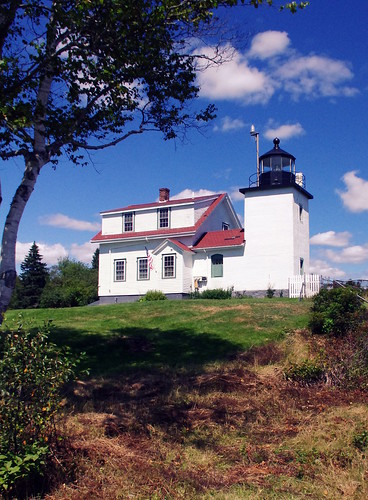
Rockland Breakwater Lighthouse has a mile long breakwater stretching out to the lighthouse, although the walk doesn’t look very long from the shore. I recommend taking the time for the walk, but remember to be careful not to trip on the uneven rocks on the trek out.
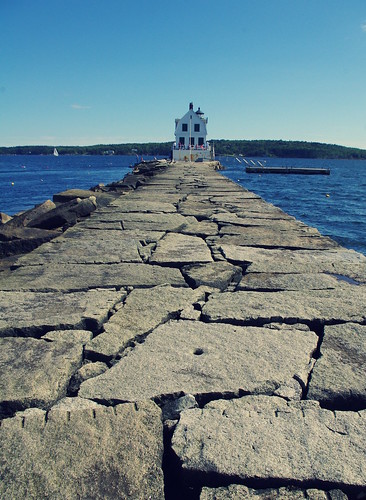
Owl’s Head Lighthouse. After walking up a few stairs, visitors find this small lighthouse perched high on a hill, offering a panoramic view of the ocean.
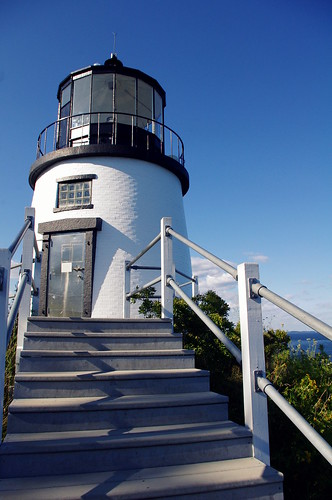
Marshall Point Lighthouse, known for being the end of Forest Gump’s long run in the movie named for the main character, is one of Maine’s most attractive lighthouses, with a long wooden walkway stretching out to the lighthouse. Even in high tide, visitors may walk on the shore underneath the lighthouse, providing a unique viewpoint of a Maine lighthouse. Although this aesthetic lighthouse, in its remote location is out of your way, as it sits on the end of a thin peninsula, the winding road takes you through authentic Maine coastal towns, which you will not regret seeing.

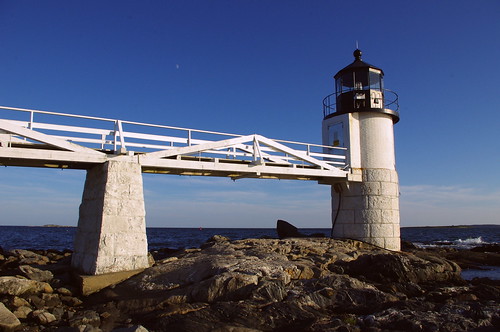
Pemaquid Point Lighthouse has the distinction of being on the state quarter.
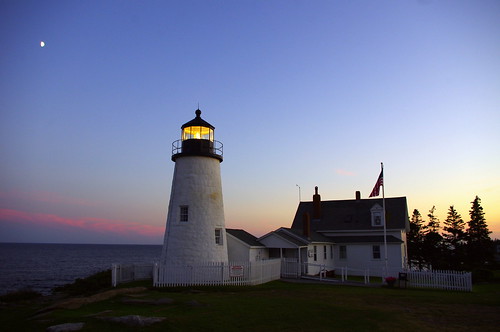
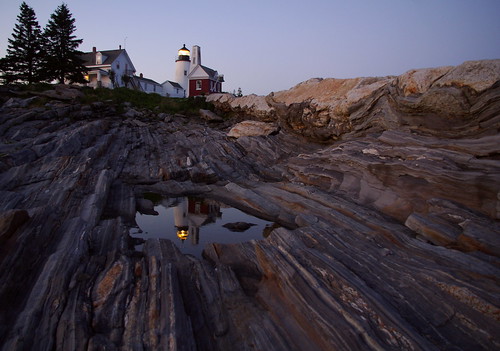
Doubling Point Lighthouse, established in 1898, has a long wooden walkway stretching out to the lighthouse, which sits over the water.

Portland Head Lighthouse is not only the oldest in Maine, but it also sits at the entrance of the primary shipping channel into Portland Harbor in the Gulf of Maine. The automated light station - tower, beacon, and foghorn - are maintained by the United States Coast Guard, and the former lighthouse keepers' house is a maritime museum. Portland Head light can be seen in many pictures, as it’s known for being the most photographed lighthouse in New England.
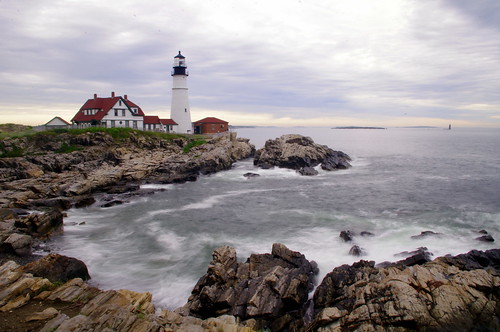
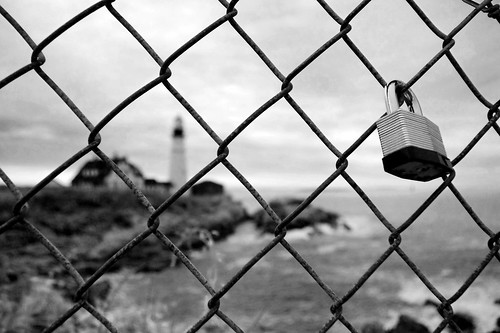
Ram Island Ledge, located in Casco Bay, can be seen from Portland Head Lighthouse in the distance, or by boat. After the underwater ledges around Ram Island were the site of repeated shipwrecks, the lighthouse was built in 1905. Portland Head Lighthouse has the distinction of being featured on a postal stamp as one of five in a collection. The lighthouse is now privately owned, as are many other lighthouses along the Maine coast today.

To capture many of the lighthouse images above, I spent eleven hours visiting lighthouses one day on my way back from our camp in Maine to my home in New Hampshire. Back in 1789, the United States Congress approved the “establishment and support of Lighthouse, Beacons, Buoys, and Public Piers” and then 200 years later, designated August 7th as National Lighthouse Day. I have many lighthouses still to visit, as there are over 60 in Maine alone. To learn more good stories about lighthouses, read the nonfiction book: Guardians of the Lights: Stories of US Lighthouse Keepers by Elinor de Wire. There is also The United States Lighthouse Society, a non-profit historical and educational organization.
Sydney Kahl is a member of the Youth Travel Blogging Mentorship Program
All photos courtesy and copyright Sydney Kahl
